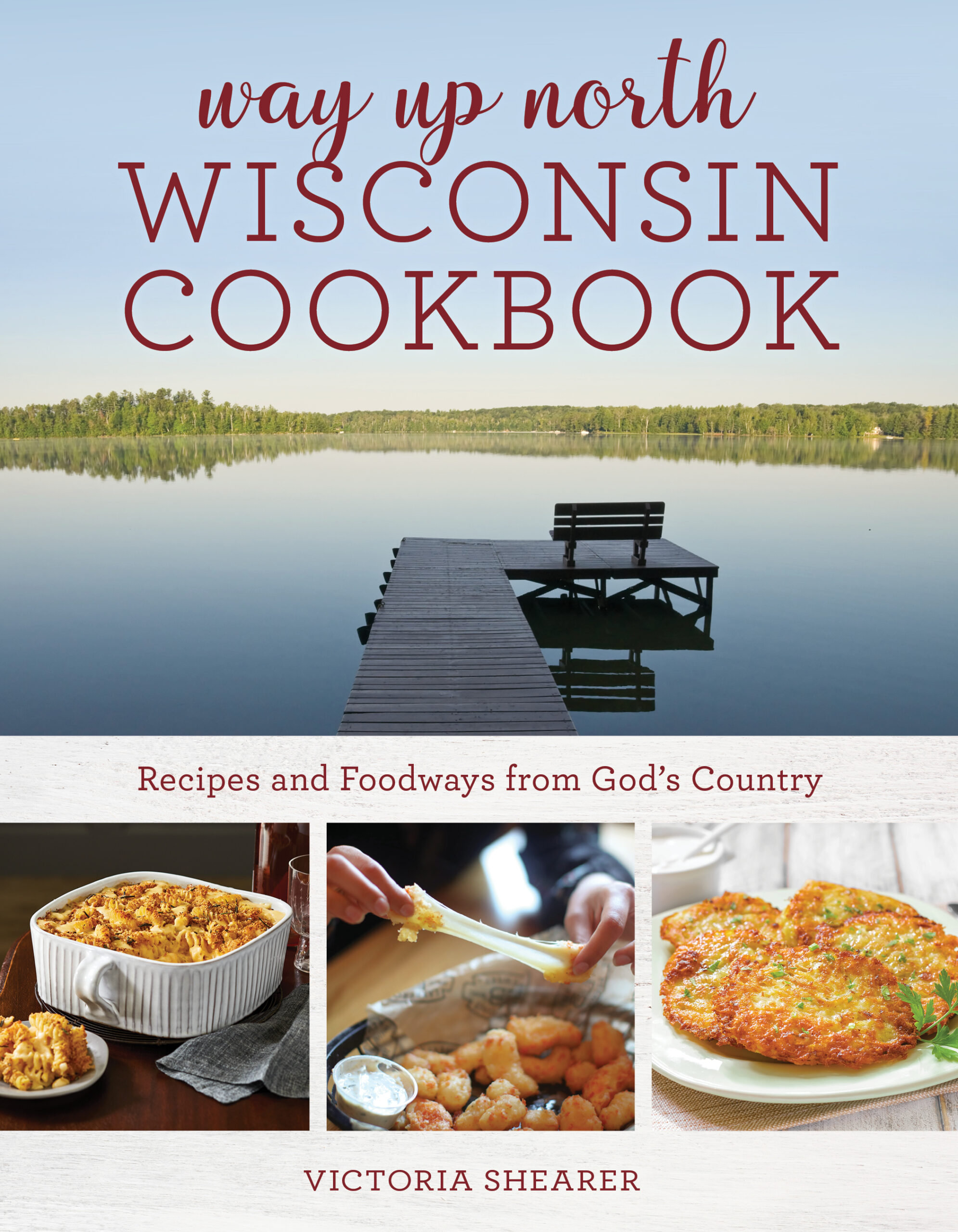What began as a one-room shack without electricity in 1949 was eventually transformed into a fully-equipped family home for Victoria Shearer.
She has been going to her family’s land in Mercer, Wisconsin since she was four years old, where she made lifelong memories with family and food.
Those sentiments were the inspiration for her new book, “Way Up North Wisconsin Cookbook: Recipes and Foodways from God’s Country,” published by Rowman & Littlefield.
Get the latest news
Sign up for WPR’s email newsletter.
She spoke with WPR’s “Wisconsin Today” about her favorite recipes and the northern Wisconsin history behind them.
The following has been edited for clarity and brevity.
Kate Archer Kent: The book’s title comes from your father’s reference to northern Wisconsin, which he called “God’s Country.” Your family built a one-room cabin there. What are your childhood memories of food and cooking up north?
Vicky Shearer: I think my favorite memory was when my grandmother made potato pancakes. She has a whole recipe in her book. My grandfather would grate the potatoes and onions and then make each of us a potato pancake the size of a dinner plate. We would line up and wait our turn to get one of these pancakes. It was usually accompanied by some fried fish that my dad had caught from the lake.
Of course, my grandmother never wrote anything down. She didn’t have a recipe. But my old aunt Fern came to visit me, and she made potato pancakes just like my grandmother makes. But she didn’t have a recipe, so she would say, “Here’s some potatoes,” and she’d put them in a bowl, and I’d measure them out. She’d say, “Here’s some onions,” and I’d measure them out. And that’s how she came up with the recipe, because she made them by hand, just like my grandmother.
KAK: What is the defining feature of northern food and cooking? It comes in many different directions.
VS: Beer, cheese and sausage are popular in Wisconsin. It’s statewide. It’s the trinity. Lake fish and fish fries are mainstream. They’re a big deal in northern Wisconsin. Virtually every tavern and restaurant has a fish fry on Friday night. I think it’s just basic simplicity. We’re all simple people.

KAK: Sausage is a staple food anywhere in the state, so how do you make a beer brat properly?
VS: I always make sausages what I call Sheboygan style: I simmer the sausages in beer and onions, par-cook them, then put them on the grill and brown them really well. Then I put them back in the beer and onions and let them simmer until I’m ready to eat. This is a great way to cook sausages for a big picnic because everyone can help themselves when they want.
KAK: Strawberry season is in full swing right now, and you have a recipe for “Drunken Strawberries with Almond Whipped Cream” served in a wine glass. How do you make it?
VS: It’s a quart of strawberries, a half cup of sugar, and Grand Marnier. I toss them together, serve them in a wine glass, and top them with toasted almonds and whipped cream with almond extract. The flavor of the almonds and the sweetness of the strawberries are amazing together. I serve it in a tulip-shaped wine glass and it makes a really pretty dessert.
KAK: Tell us about the history of the pasty and how it fits into northern Wisconsin culture.
VS: They came with the miners. The Cornish English used to carry the pies in little pans to the mines to keep them warm. The crust was like a half-piece of pie rolled up, like a half-moon meat pie. They would hold on to that part of the crust to keep the iron or copper powder from getting into their food and poisoning them.
But in northern Wisconsin, it’s gone a step further than the traditional Cornish pasty, adding chopped meat or rutabaga along with the potatoes. When lumberjacks, Finns, Norwegians, and people who settled in northern Wisconsin got hold of it, they changed it up a bit to make brown beef. And now in Wisconsin, you can put just about anything in a pasty.

